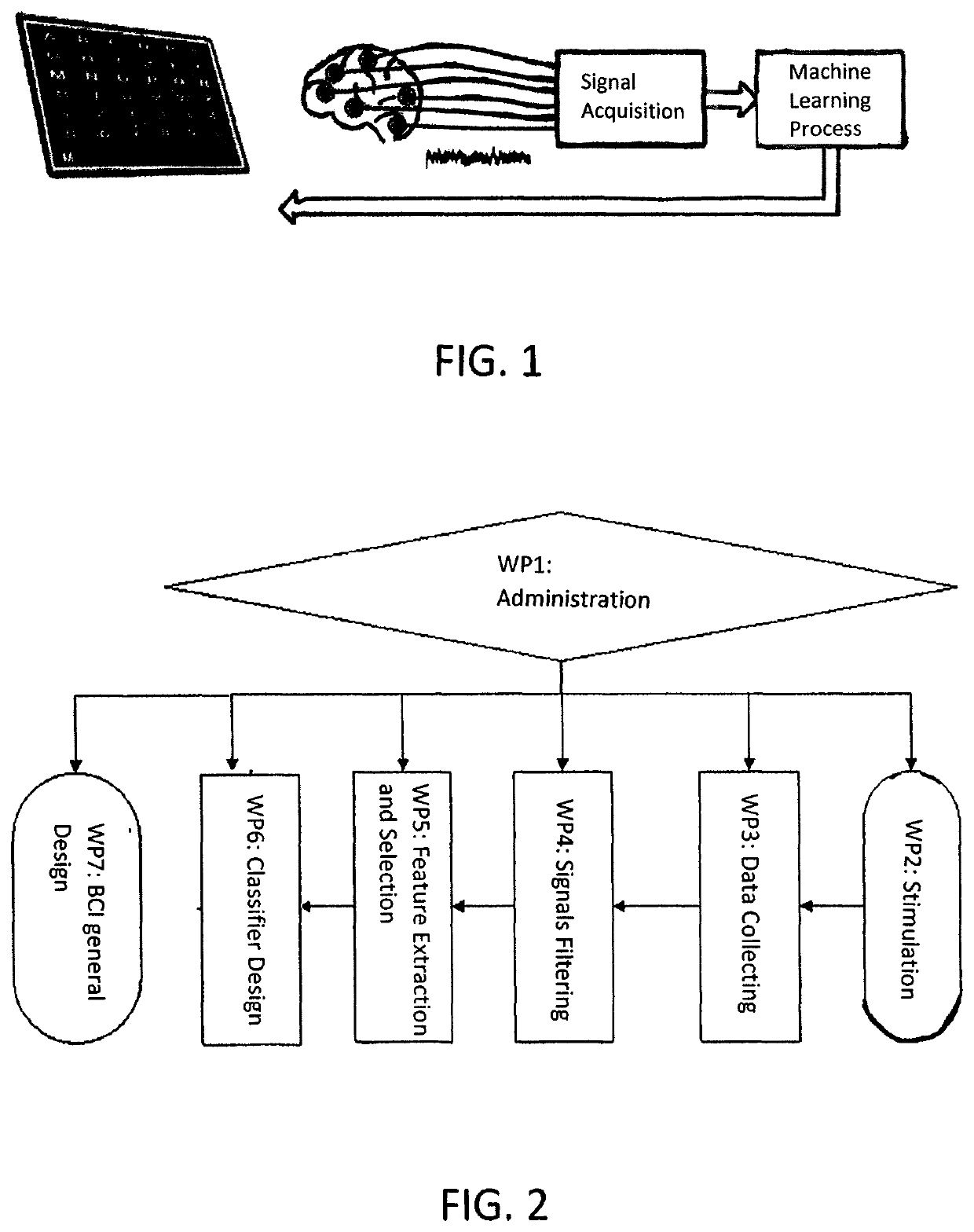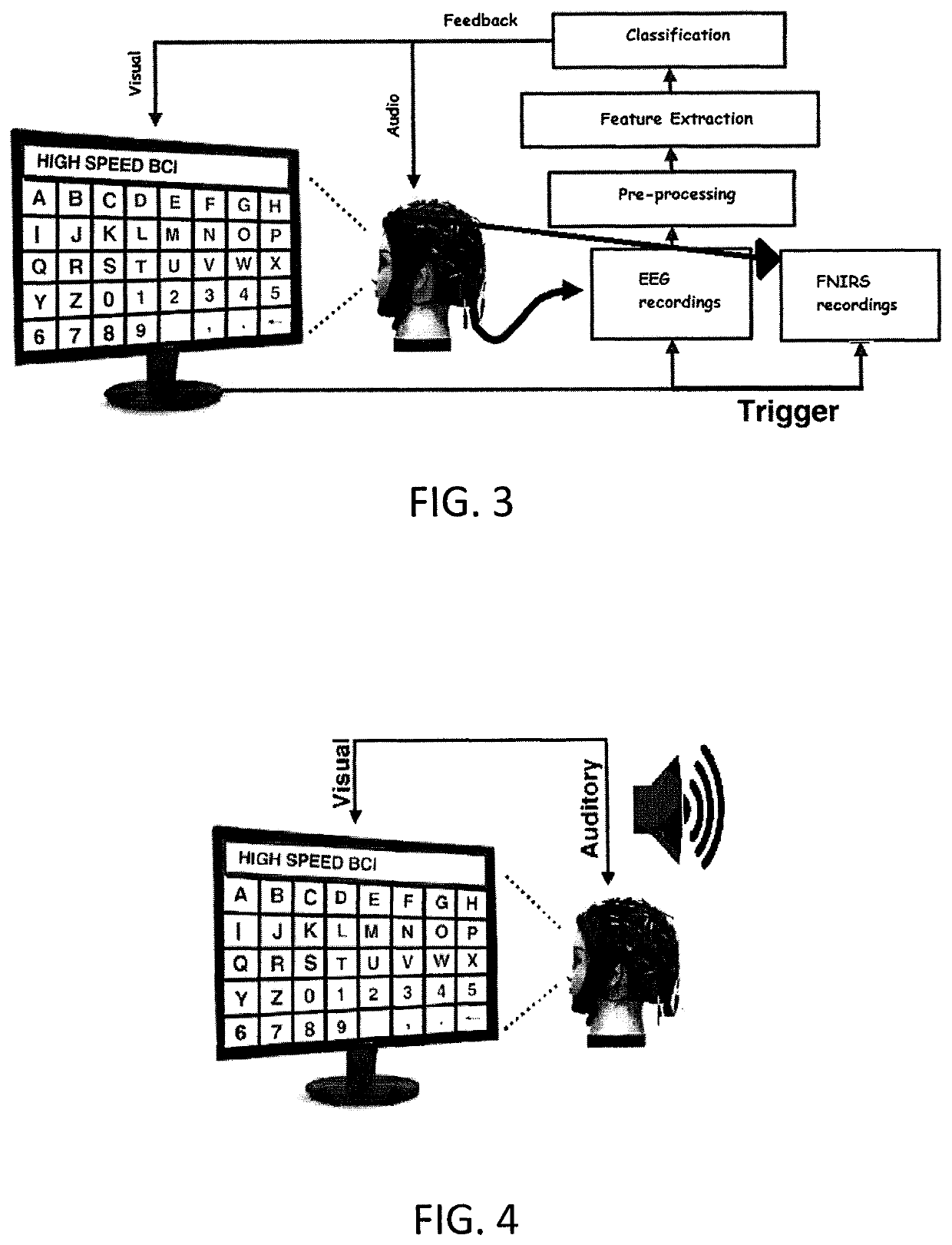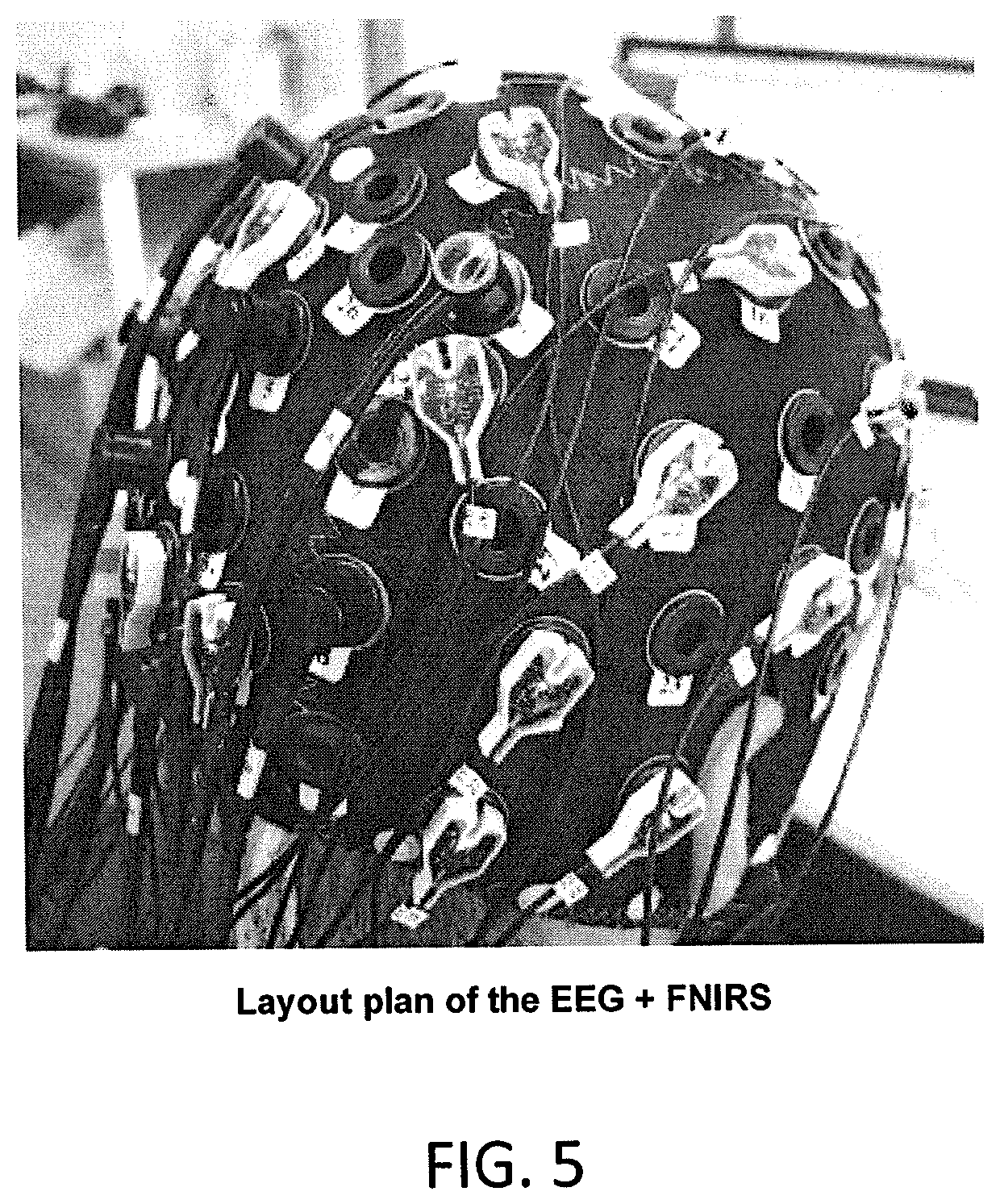Letter and number recognition system using EEG-fNIRS for speech impaired people
a speech-impaired and speech-impaired technology, applied in the field of braincomputer interfaces, can solve problems such as depression and the possibility of returning to work, serious life quality deterioration, and communication disruption
- Summary
- Abstract
- Description
- Claims
- Application Information
AI Technical Summary
Benefits of technology
Problems solved by technology
Method used
Image
Examples
Embodiment Construction
[0017]Referring to FIG. 1, there is shown a representation of electrodes 10 attached to a subject which detect EEG signals. These signals are acquired by signal acquisition unit 12 which provides an output to a machine learning process 14. The machine learning process provides an output to, for example, a visual display 16 to provide visual feedback to the subject. EEG signals are low amplitude bioelectric signals detected by electrodes from the surface of the brain. The amplitude of these marks is in the range of 1-400 μV from top to top. Although the EEG signal has a wide frequency band, clinical and physiological interest is concentrated between 0.5 and 30 Hz. This frequency range is divided into four frequency bands. These are:[0018]1. Delta (d) Waves: Their frequency varies between 0.5-4 Hz; their amplitude varies between 20-400 mV. It is encountered when the brain shows very low activity such as deep sleep and general anesthesia.[0019]2. Theta (q) Waves: Their frequency varies...
PUM
 Login to View More
Login to View More Abstract
Description
Claims
Application Information
 Login to View More
Login to View More - R&D
- Intellectual Property
- Life Sciences
- Materials
- Tech Scout
- Unparalleled Data Quality
- Higher Quality Content
- 60% Fewer Hallucinations
Browse by: Latest US Patents, China's latest patents, Technical Efficacy Thesaurus, Application Domain, Technology Topic, Popular Technical Reports.
© 2025 PatSnap. All rights reserved.Legal|Privacy policy|Modern Slavery Act Transparency Statement|Sitemap|About US| Contact US: help@patsnap.com



